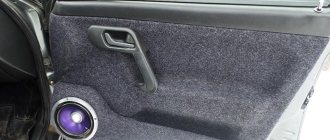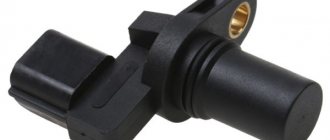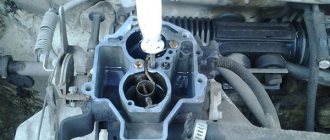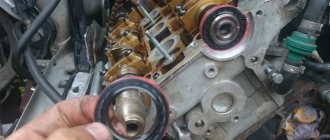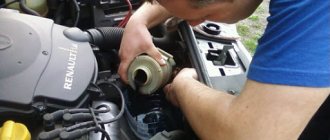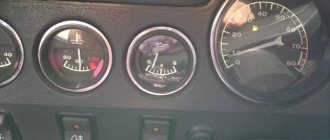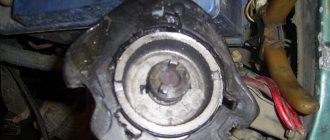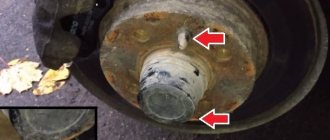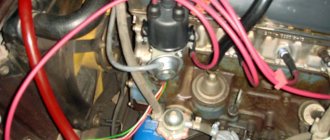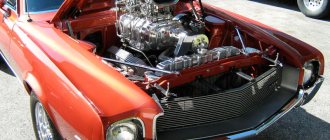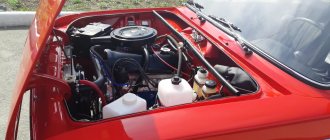As is known, the power of any naturally aspirated engine strongly depends on the displacement, and is also quite limited by the physical displacement of the internal combustion engine. To put it simply, the outside air is due to the vacuum that occurs as a result of the movement of the pistons in the cylinders.
At the same time, the amount of fuel that can then be effectively burned directly depends on the amount of incoming air. In other words, to make a naturally aspirated engine more powerful, it is necessary to increase the cylinder displacement, increase the number of cylinders, or combine both.
Another effective way is to supply air to the engine under pressure. In this case, the volume of the cylinder and the number of “pots” do not need to be changed, while the air is forced in, which automatically allows more fuel to be supplied and then to burn such a charge of the fuel-air mixture with maximum efficiency.
Among the air blowers, turbocharging and a mechanical compressor should be highlighted. Each of the solutions has both its pros and cons, while installing a mechanical air blower with your own hands in practice may well turn out to be somewhat easier than correctly performing the work of installing a turbocharger. Next we will talk about whether it is possible to install a compressor on the engine with your own hands and what needs to be taken into account as part of such an installation.
How to install a compressor on a naturally aspirated engine? Step by step guide
Did you know that installing a compressor on a naturally aspirated engine is necessary to increase its power?
When choosing a car, many buyers do not even think about what type of engine is installed in their favorite car model. But in vain, since this is one of the most important factors that every motorist needs to know. In naturally aspirated engines, the fuel supply process is carried out through an injector or carburetor, and a certain volume of air is used to prepare a fuel mixture that can bring the moving parts of the engine into working condition and make them rotate.
Naturally aspirated engines have several advantages over their turbocharged counterparts. The service life can be many hundreds of thousands of kilometers, and this figure can reach half a million without the need to repair the engine. Structurally, naturally aspirated engines are so simple that they can work even with fuels and lubricants of rather low quality.
Well, and, of course, it is impossible not to mention that if such an engine needs to be repaired, the costs will be an order of magnitude lower than with a turbocharged engine version.
Aspirated Engine Basics
The atmospheric engine is perhaps the most complex in its design. In a naturally aspirated engine, the fuel-air mixture is supplied to the cylinders without the slightest resistance, which means that the manifold has undergone serious modifications. Secondly, the camshaft is very finely tuned in order to ensure the longest possible opening of the intake valve. Finally, the piston stroke and cylinder bore are increased to provide even more engine power. As you can see, the naturally aspirated engine is very complex in design, but elastic and responsive in operation.
The main highlight of the naturally aspirated engine is that it has a reserve of power at any speed and instantly responds to pressing the accelerator pedal. This means that the naturally aspirated engine spins up to maximum speed best of all. At the same time, among the existing shortcomings, the most serious are high fuel consumption and relatively low engine life.
Features of supercharger and turbocharging
Before installing a compressor on the naturally aspirated engine of your car, you should know that its significant disadvantages include its excessive weight and the inability to provide the necessary power in off-road conditions.
The great advantage of a turbocharged engine is its use of exhaust gases, which in turn, through the turbine, forcefully create air pressure through the cylinders and a mixture of fuel and air is formed in them. In this case, the increase in power gain can reach 10–12%
, in comparison with the atmospheric analogue.
To increase engine power, a mechanical supercharger is installed, which is a conventional compressor. The supercharger drive is connected to the crankshaft, which allows a certain volume of air to be pumped into the cylinders.
This process is carried out in proportion to the number of engine revolutions. Unlike a turbocharger, a supercharger does not increase the temperature due to the temperature of the exhaust gases of the manifold, which sets it apart from its main competitor. However, the disadvantage is a decrease in the efficiency of the motor, since its drive takes a certain percentage of the power.
Compressor engines
The compressor on the engine is a kind of mechanical supercharger that is driven by a belt drive. This means that the higher the engine speed, the more power it will receive. The compressor not only supplies the air/fuel mixture under pressure to the cylinders, but also purges them when the intake and exhaust valves are in the half-open and closed positions. Thus, the compressor not only increases power, but also cleans the cylinders, which allows the engine to constantly operate at its maximum capabilities.
The disadvantage of the compressor is that it only works effectively on large-volume engines. Therefore, one should also forget about the efficiency of such an engine.
What will you need for installation?
For ease of installation, you will need to purchase a ready-made kit, which includes the compressor itself and all the components necessary for installation, thanks to which you can configure and regulate the operation of the engine. You can look for this kit from foreign cars, which can be adapted for many types of engines.
However, installing a compressor on a foreign-made naturally aspirated engine may require serious intervention in terms of modifications. Here you can’t do without the necessary engine firmware, installing an intercooler to ensure the required level of pressure, piping, upgrading the fuel system, as well as certain settings that are strictly suitable for a certain type of engine.
Therefore, it would be more advisable to entrust such a rather complex work to the specialists of auto centers, who will not only help you decide on the choice of a supercharger kit that is ideal for your car, but will also be able to perform high-quality installation and adjustment work.
About installing a compressor using ready-made KIT kits
These systems are complete sets that include a compressor, as well as everything necessary to ensure its joint operation with the VAZ injector engine. KIT kits come in two types.
The first of them is a homemade system, which is manufactured using a homemade method using used compressors removed from foreign-made cars and adapted for installation on VAZ 2107 engines.
The second option involves the use of Chinese factory-assembled kits. Their advantages over hand-made systems are greater reliability and an attractive price. In addition, it is worth noting that adapting such a compressor and everything that comes with it to VAZ cars is much simpler, because it is manufactured specifically for 2107 engines. In addition, KIT kits are distinguished by their simplicity. As a result, almost every car owner with at least basic knowledge of its structure is able to install a compressor without outside help.
It is worth noting that on the market you can purchase both a truly factory kit, which is covered by a warranty, and a cheaper sample. No one can guarantee the stability of such a system.
Do-it-yourself mechanical supercharging of the engine: installing a compressor
As is known, the power of any naturally aspirated engine strongly depends on the displacement, and is also quite limited by the physical displacement of the internal combustion engine. To put it simply, the outside air is due to the vacuum that occurs as a result of the movement of the pistons in the cylinders.
At the same time, the amount of fuel that can then be effectively burned directly depends on the amount of incoming air. In other words, to make a naturally aspirated engine more powerful, it is necessary to increase the cylinder displacement, increase the number of cylinders, or combine both.
Among the air blowers, turbocharging and a mechanical compressor should be highlighted. Each of the solutions has both its pros and cons, while installing a mechanical air blower with your own hands in practice may well turn out to be somewhat easier than correctly performing the work of installing a turbocharger. Next we will talk about whether it is possible to install a compressor on the engine with your own hands and what needs to be taken into account as part of such an installation.
Read in this article
Do-it-yourself drive supercharger for a VAZ
One of the possibilities to extend the life of an old car, for example any VAZ 2107, 2106, 2114, 2112, is its tuning. Of course, in this case we are not talking about installing new wheels and covers, but primarily about increasing engine power. And one of the simplest and most affordable options for ensuring this is to install a mechanical supercharger on the motor yourself.
- Mechanical supercharger for VAZ - pros and cons
- How to install an air blower yourself
- Homemade supercharger for VAZ
- Do-it-yourself drive supercharger - from a KIT kit
Mechanical supercharger for VAZ - pros and cons
The larger the engine and the more cylinders it has, the higher its power. This is the very first conclusion when observing motors and machines. But this is not always the case. The more fuel burned in the engine cylinders, the more power it can produce. But the cylinder volume is finite, and I want to have increased power. This is where a mechanical air blower comes to the rescue.
The principle of its operation is extremely simple and works on any car, including the VAZ 2107, 2106, 2114, 2112 family - it provides additional air to the engine, resulting in:
- the purging of the cylinders increases, and they are better freed from the remains of burnt fuel;
- more fuel enters the engine cylinders, which ensures more power;
- The compression ratio increases, which also gives an increase in power.
Mechanical engine charging: what you need to know
Let's start with the fact that installation of any type of supercharger (mechanical or turbocharging) is possible on both injection and carburetor engines. In both cases, a number of modifications to the power unit are expected, however, installing a turbine on the engine is somewhat more difficult and expensive compared to a compressor.
It becomes clear that a mechanical supercharger is a more affordable way to increase engine power; such a solution is easier to install on the engine, and the work can even be done independently. At the same time, the general principle of operation of the supercharger is quite simple.
The device can actually be compared to an attachment (generator, power steering pump or air conditioning compressor), that is, the unit is driven by the engine. As a result of the operation of a mechanical compressor, the air is compressed and enters the cylinders under pressure.
This allows the cylinders to be better purged (ventilated) from exhaust gas residues, cylinder filling is significantly improved, the amount of air in the combustion chamber increases, which makes it possible to burn more fuel and increase engine power.
Also, the compressor has a direct dependence on engine speed. The more the engine is revved, the more air is supplied to the combustion chambers and, accordingly, the power increases. At the same time, there is no pronounced effect of turbojam (turbolag), which is found on turbocharged engines. Turbo lag manifests itself in the form of a failure at low speeds, when the exhaust energy is not yet enough to spin the turbine and create the necessary pressure to effectively supply air to the cylinders.
In other words, all work is carried out comprehensively, which further allows the forced power unit to operate successfully and stably without significantly reducing its service life. Now let's look at some of the features of this installation.
—>Auto parts and service stations —>
Is it worth it?!
1. Where does power come from? The turbine is driven by exhaust gases that are quickly pushed out of the engine. The turbine compressor forces air into the engine. More air means more fuel can be burned, more power.
2. Oh, the consumption is probably high? Of course, if the maximum power is higher, then the air/gasoline consumption is higher. BUT. You won't always drive at maximum speed. Practice shows that a well-built and tuned efficient turbo engine consumes no more than usual, and sometimes (for example on the highway) even less, and it drives noticeably better. For example, I have already configured more than one 16kL front-wheel drive “regular” (stock engine, head, only Niva pistons with a puddle, SZh 7.8), consumption on the highway is 6-7 liters. 95th, in the city 11-12 liters. Launch in any frost. And the mileage is not 5 thousand before repair, one engine has already run 70 thousand, delivering SUSHI

